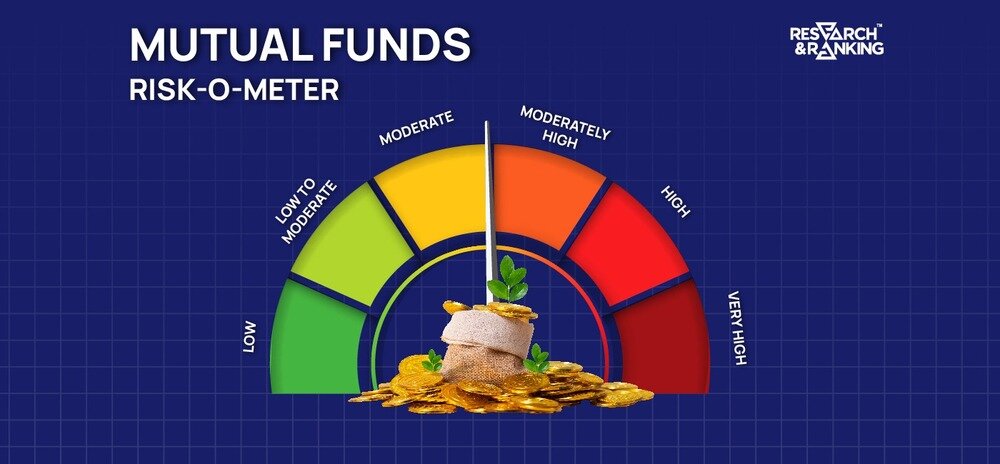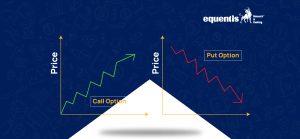Investing in mutual funds could be a viable investment choice, but it’s not without risks. Like a rollercoaster, there will be fluctuations. The key is understanding how much volatility you can stomach. This is where the Mutual Fund Riskometer comes in – your handy guide to navigating the exciting yet potentially risky world of mutual funds. Let’s understand what the Riskometer is all about!
What is the Mutual Fund Riskometer?
The Riskometer is a standardized tool mandated by SEBI (Securities and Exchange Board of India) to help investors make informed decisions based on risk tolerance. It used to be a color-coded box system, but in 2020, it got an upgrade. Now, it’s a meter with six levels, ranging from ‘Low’ to ‘Very High’ risk.
It is more like a visual tool showing the potential risk level associated with a particular mutual fund scheme. It typically consists of a meter with six levels, ranging from ‘Low’ to ‘Very High’ risk. By glancing at the Riskometer, you get a quick sense of how much the value of your investment might fluctuate.
Decoding the Riskometer
The meter is divided into six sections, each representing a risk level. Here’s a breakdown of what each level signifies:
- Low Risk: These funds invest in safer options like government bonds, offering low volatility and predictable returns, though potentially lower than other options.
- Low to Moderate Risk: This is a good balance for conservative investors seeking growth potential with a buffer against volatility. These funds might invest in a mix of bonds and less risky stocks.
- Moderate Risk: These funds are suitable for investors comfortable with some fluctuations. They typically invest in a balanced mix of stocks and bonds, offering the potential for higher returns but with more risk involved.
- Moderate to High Risk: This category caters to investors seeking potentially higher returns who are okay with experiencing some market swings. These funds might invest more in stocks, particularly established companies.
- High Risk: These funds aim for aggressive growth by investing heavily in stocks, including those of smaller companies. This translates to potentially significant returns and the possibility of larger losses.
- Very High Risk: This category is for investors with a high-risk tolerance and a long investment horizon. These funds might invest in stocks of startup companies or even specific sectors, offering the potential for very high returns but also carrying the risk of substantial losses.
Explore our SIP Calculator to calculate returns vs investments.
How Does the Riskometer Work?
The Riskometer rating is based on several factors, including:
- Asset Allocation: The types of investments the fund holds (stocks, bonds, etc.) play a big role. Generally, stock-heavy funds tend to be riskier than bond-heavy funds.
- Historical Volatility: The extent to which the fund’s value has swung up and down in the past can indicate future volatility.
- Market Sensitivity: How much the fund’s performance is tied to the overall market conditions.
Understanding Your Risk Tolerance
Before you jump on the investment ride, it’s crucial to understand your own risk tolerance. How comfortable are you with potential losses? Are you saving for a short-term goal like a down payment on a house or a long-term goal like retirement? Here’s a breakdown of some common risk profiles:
- Conservative: You prioritize security and are okay with lower potential returns. You might be drawn to low-risk funds with a steady track record.
- Moderate: You can handle some bumps in the road in exchange for the possibility of higher returns. Balanced funds with a mix of stocks and bonds might suit you.
- Aggressive: You’re comfortable with a higher risk for the chance of significant gains. Stock-heavy funds with the potential for high growth (and high volatility) might be your pick.
How to Use the Riskometer:
- Find the Riskometer: It should be prominently displayed on the fund’s information sheet or website.
- Compare Risk Levels: Once you understand your risk tolerance, compare the Riskometer rating of different funds you’re considering.
- Align with Your Goals: Choose funds with Riskometer ratings that align with your investment horizon (short-term vs. long-term goals) and risk tolerance.
By understanding the Mutual Fund Riskometer and your own risk tolerance, you can confidently navigate the exciting world of mutual funds. Remember, the Riskometer is a starting point, not a guarantee. Past performance doesn’t necessarily predict future results. Diversification is key. Don’t put all your eggs in one basket. To manage risk, spread your investments across different asset classes and funds with varying Riskometer ratings.
FAQ
Can the Riskometer rating change?
Yes, a fund’s Riskometer rating can be reviewed periodically based on changes in its investment strategy or market conditions.
What if a fund doesn’t have a Riskometer rating?
It’s best to avoid such funds. A Riskometer rating is a mandatory requirement for all mutual funds in India.
Are there other factors to consider besides the Riskometer?
Absolutely; look into the fund’s expense ratio, investment philosophy, and past performance (remember that past performance does not indicate future results).
Where can I learn more about mutual funds and risk management?
Many financial institutions and investment platforms offer educational resources. Consider consulting a financial advisor for personalized advice.
Should I invest in a high-risk fund if I have a low-risk tolerance?
No! It’s important to choose investments that suit your comfort level with risk.
How useful was this post?
Click on a star to rate it!
Average rating 5 / 5. Vote count: 1
No votes so far! Be the first to rate this post.
I’m Archana R. Chettiar, an experienced content creator with
an affinity for writing on personal finance and other financial content. I
love to write on equity investing, retirement, managing money, and more.
- Archana Chettiar













